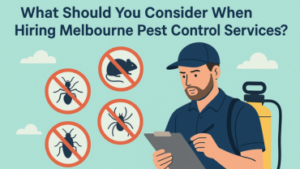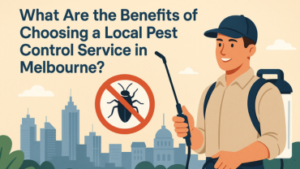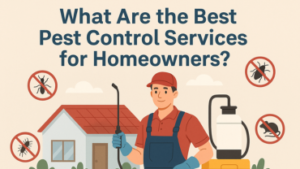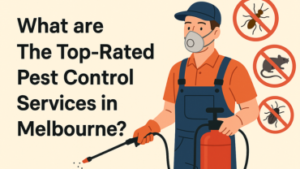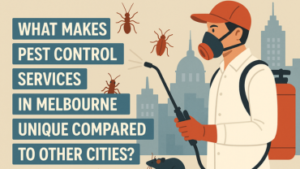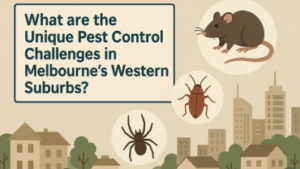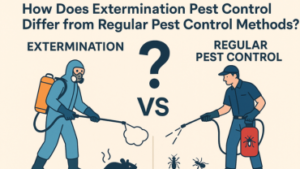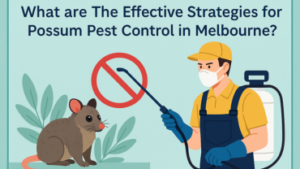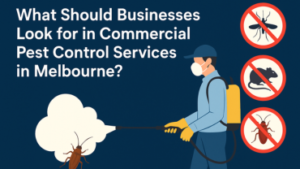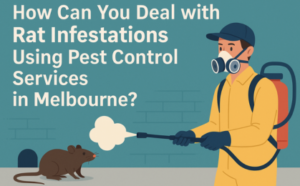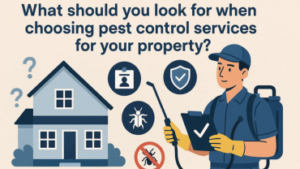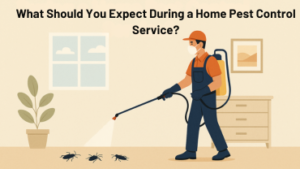Pests don’t just invade your home; they invade your peace of mind. One day, you’re enjoying a quiet evening; the next, you’re sharing your kitchen with an army of ants or listening to the unsettling scratch of rodents in your walls. The big question racing through your mind? “How much is this going to cost me?”
Understanding pest control near me prices is crucial, not just to avoid overpaying, but to ensure you’re getting real value. A cheap, unreliable service might leave pests laughing at your efforts, while an overpriced one could drain your wallet without solving the problem. In this guide, we’ll pull back the curtain on pest control pricing in Australia, breaking down what influences costs, what you can expect to pay, and how to get the best bang for your buck.
By the end, you’ll be armed with the knowledge to make a smart, cost-effective decision, because nobody should have to live with uninvited creepy crawlies.
Why Pest Control Pricing Matters More Than You Think
Let’s be real, when pests show up, most of us just want them gone fast. But rushing into the cheapest option can backfire. Low-cost treatments might use weak chemicals, skip critical inspections, or worse, leave you with a recurring infestation that ends up costing more in the long run.
On the flip side, paying top dollar doesn’t always mean top quality. Some companies inflate pest control near me prices with unnecessary add-ons or vague “premium service” labels. The key? Knowing what actually affects pricing so you can spot a fair deal.
Here’s the truth: Good pest control is an investment, not an expense. A proper treatment protects your home’s structure, your family’s health, and your sanity. So, before you panic-Google “exterminator near me,” let’s break down what goes into the cost, and how to avoid getting ripped off.
What Really Drives Pest Control Costs? (Spoiler: It’s Not Just the Pests)
1. The Type of Pest: Why a Cockroach Isn’t the Same as a Termite
Not all pests are created equal, and neither are their treatments. A quick spider spray might cost $150, but termites? That’s a whole different ballgame. These silent destroyers require intensive inspections, chemical barriers, or even fumigation, pushing prices into the thousands.
- Rodents? Traps and exclusion work add up.
- Bed bugs? Heat treatments are more effective (and pricier) than sprays.
- Bees or wasps? Nest removal can be risky, requiring specialized skills.
The takeaway? The pest you’re dealing with is the biggest factor in pest control near me prices.
2. Your Home’s Size & Layout: Bigger Space = Bigger Bill
A studio apartment will cost far less to treat than a sprawling 4-bedroom house. But it’s not just square footage, cluttered spaces, multiple entry points, and hard-to-reach areas (like attics or subfloors) can drive up labour time and chemical use.
Pro tip: Decluttering before a treatment can save you money by making the job quicker and easier.
3. How Bad Is It? (The Infestation Scale Matters)
A few ants on your counter? Probably a one-off spray. But if they’re marching in formation from every crack, you might need ongoing treatments. Severe infestations often require:
- Multiple visits
- Stronger chemicals
- Follow-up inspections
The longer you wait, the worse (and more expensive) it gets.
4. Treatment Method: Chemicals, Traps, or Heat?
- Standard sprays are the cheapest but may not work for stubborn pests.
- Baits & gels cost more but target pests like cockroaches at the source.
- Heat treatments (for bed bugs) are expensive but highly effective.
Eco-friendly options might also come at a premium, but if you have kids or pets, they’re worth considering.
5. Location & Accessibility: Urban vs. Rural Costs
City-based companies often charge more due to higher overheads, while rural services might add travel fees. If your pest problem is in a tight crawl space or high roof, expect extra labour costs.
The Real Numbers: What Australians Are Paying for Pest Control
| Service | Average Cost (AUD) |
|---|---|
| General Pest Spray | $150 – $300 |
| Termite Inspection | $200 – $350 |
| Rodent Removal | $250 – $500 |
| Bed Bug Treatment | $300 – $600 |
| Ant Control | $120 – $250 |
| Annual Maintenance | $400 – $800/year |
Prices vary based on factors mentioned earlier. Always request a custom quote for accuracy.
Smart Ways to Save on Pest Control (Without Sacrificing Quality)
- Bundle Services for Discounts
Need a termite inspection and a general spray? Some companies offer package deals. - Preventative Plans Beat Emergency Call-Outs
Paying $500 once a year is better than $300 every few months for new infestations. - DIY What You Can (But Know Your Limits)
Sealing cracks, fixing leaks, and keeping a clean home reduce pest attraction. But leave the heavy-duty treatments to pros. - Ask About Guarantees
A good company will offer a warranty, if pests come back, so do they (for free).
The Real Cost of Ignoring Pests: How Delaying Treatment Doubles Your Pest Control Near Me Prices
The Domino Effect of Postponement
What begins as a minor nuisance often escalates into a structural emergency. Pests reproduce exponentially, a termite colony that would cost $800 to eliminate today can cause $15,000 in structural damage within 12 months. The mathematics of infestation is unforgiving.
Health Implications Multiply Costs
Rodent droppings trigger respiratory issues. Cockroach allergens worsen asthma. These hidden health consequences often result in medical bills that dwarf original treatment costs. Professional intervention isn’t just about pest removal, it’s a preventative health measure.
The False Economy of Temporary Solutions
Over-the-counter sprays provide cosmetic relief while driving pests deeper into your property’s infrastructure. This false sense of security allows colonies to establish strongholds in inaccessible areas, ultimately requiring more extensive (and expensive) professional treatments.
How Often Should You Treat Your Home?
The Prevention Paradox
Regular maintenance often feels unnecessary precisely because it works so effectively. Homes with scheduled treatments rarely experience severe infestations, creating the illusion that the service wasn’t essential. This explains why 68% of emergency call-outs come from properties without recent pest management.
Climate-Specific Considerations
Australia’s varied microclimates demand tailored approaches. Tropical northern regions require more frequent termite inspections than temperate southern zones. Coastal properties face different challenges than inland dwellings. A one-size-fits-all schedule does your home a disservice.
The Three-Tiered Defence Strategy
- Annual Structural Inspections (Non-negotiable for all Australian homes)
- Bi-Annual Preventative Treatments (Adapted to your local pest pressures)
- Immediate Response Protocols (For first signs of activity between cycles)
When Should You Call a Pro? (The 5 Pest Problems You Should NEVER DIY)
- Termites: The Silent Saboteurs
DIY termite treatments typically address surface evidence while missing the primary colony. Professional inspectors use moisture meters, thermal imaging, and borescopes to detect hidden activity before structural damage occurs. - Bed Bugs: The Hitchhiking Horde
These elusive pests require whole-room heat treatments reaching precise temperatures. Consumer-grade products scatter bed bugs to adjacent rooms, transforming a contained problem into a building-wide infestation. - Rodents: The Wiring Vandals
Mice and rats gnaw through electrical wiring with frightening consistency. What begins as a pest issue often becomes an electrical fire risk requiring multiple trade interventions. - German Cockroaches: The Evolutionary Champions
This species develops pesticide resistance alarmingly fast. Professionals use undetectable gel baits that exploit roaches’ social feeding behaviours to eliminate entire nests. - European Wasps: The Aggressive Architects
Nest disturbance triggers mass stinging events. Worse, many Australian homes contain asbestos in areas where wasps nest. Professional removal avoids both health risks.
Renter vs. Owner: Who’s Responsible for Pest Control Costs?
The Legislative Landscape
Each Australian state maintains slightly different residential tenancy laws regarding pest control. However, the principle remains consistent: responsibility follows causation. Pre-existing conditions fall to landlords, while tenant-introduced infestations become the renter’s obligation.
The Documentation Imperative
Thorough move-in/move-out reports with timestamped photographs provide crucial evidence when determining liability. We recommend all clients maintain a “pest log” noting any sightings with dates and locations.
The Shared Interest Principle
Even when legal responsibility is clear, cooperative action produces the best outcomes. Many landlords offer to split costs when tenants demonstrate prompt reporting and property care.
Professional Protection for Your Property
Understanding these realities helps homeowners and renters make informed decisions about pest management. Chris Pest Control offers tailored solutions that respect both your property’s needs and your budgetary considerations. Our certified technicians provide transparent assessments without obligation, because an educated client makes the best partner in pest prevention.
Contact our team today to schedule a comprehensive property evaluation. Let’s develop a strategic defence plan that addresses your specific risks before they become emergencies.
The Bottom Line: Don’t Let Pests (or High Prices) Win
Now that you know the real pest control near me prices, you’re in control. The worst thing you can do? Ignore the problem until it’s a full-blown (and expensive) disaster.
Take Action Today with Chris Pest Control!
We don’t just kill pests, we give you back your peace of mind. Transparent pricing, no hidden fees, and guaranteed results.
Call us now for a free quote—let’s make your home pest-free for good.

